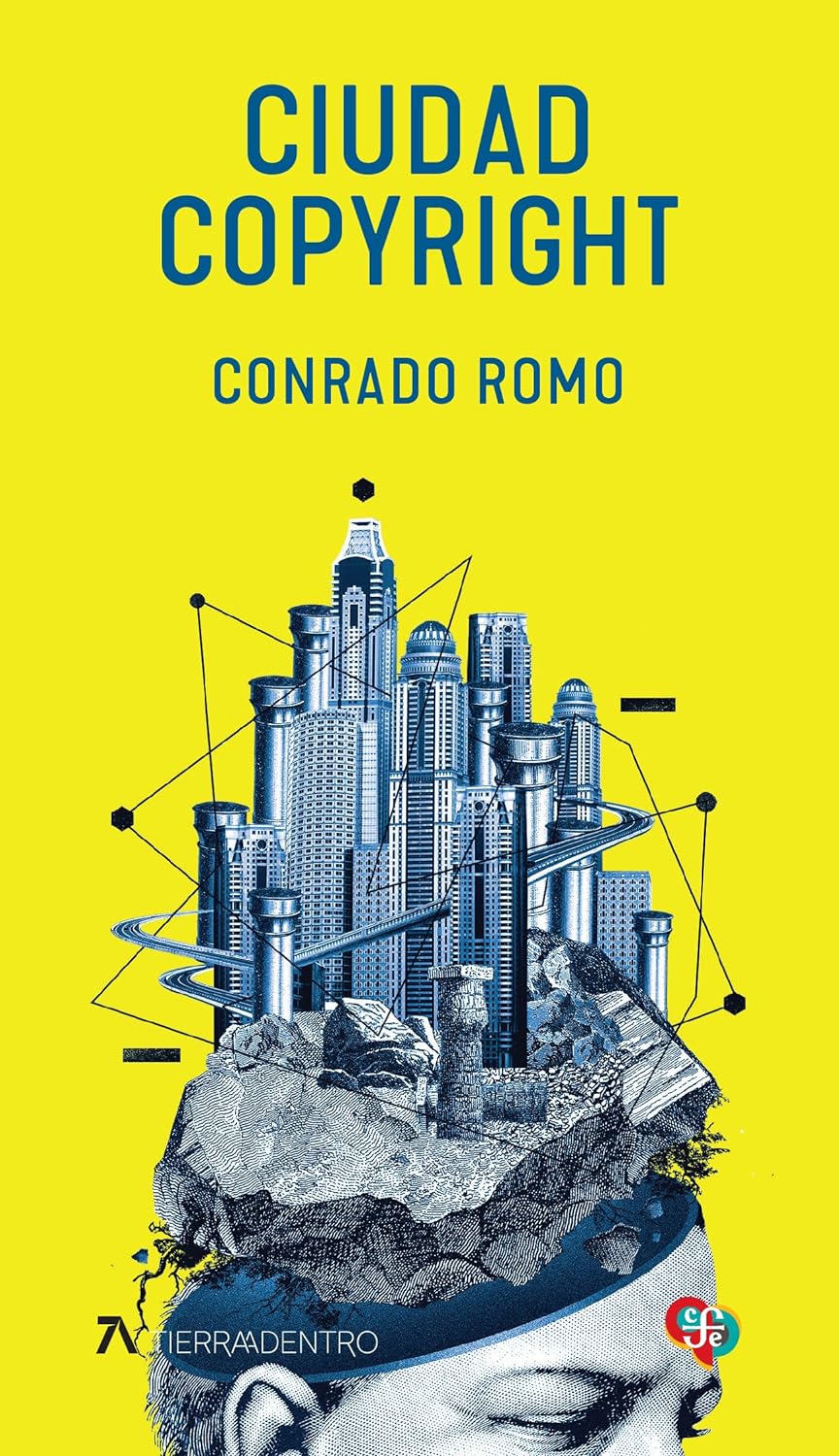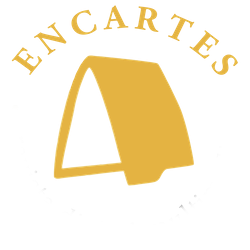What is the idea of a creative city based on?
- Christian O. Grimaldo-Rodríguez
- ― see biodata
What is the idea of a creative city based on?
Receipt: May 10, 2024
Acceptance: May 29, 2024

Ciudad copyright
Conrado Romo, 2024 Fondo de Cultura Económica, Mexico City, 100 pp.
Conrado Romo, author of the book, was a founding member of the Mexican Pirate Party. A political grouping inspired by European pirate parties that sought to reform intellectual property laws, defend freedom of expression, net neutrality and universal access to the Internet. The pirate parties promote the reduction and/or abolition of the restrictions imposed by the so-called "copyright" and their program includes the prohibition of digital management restrictions and encourages the sharing of commercial content without requesting a license, among other related issues. The data is relevant in that the ideas of Ciudad copyright (Romo, 2024) emerge from the mentality and social relations of someone whose gaze has been enabled to identify the risks of privatizing culture and who has fought to liberate it in different scenarios.
The book starts from a very interesting premise that recovers ideas from the Marxist thought of authors such as Karl Marx himself, but also from geographers such as David Harvey and the philosopher Henri Lefebvre. The premise is the following: all cities take the form of their productive vocations, the streets of a port city will be oriented to the sea, the houses of a mining city will be nestled in the slopes of the land, the merchant cities are funnel-shaped, because in the center all exchanges are made. The existence of these cities, framed in capitalist dynamics, will depend to a large extent on the way in which they transmit this productive vocation to their inhabitants through imaginaries that orient their desires to dedicate their time and their bodies to production. So far it all sounds very familiar, experience itself will not let us lie about these assumptions, but what happens when the vocation of a city is oriented to the exploitation of a good that is not scarce? Fish and precious metals are depleted, for example, while commercial relations depend on the existence of goods to be exchanged; however, what is a creative city based on?
A creative city fishes for ideas, extracts culture, trades with the colors, flavors and aromas of daily life, but these things are not scarce goods and in order to make them scarce there exists the copyright. In cognitive capitalism, the city model has as its vocation "The extraction of value through the creation, sale and consumption of intellectual property" (Romo, 2024:15). For a city to be creative, it needs a process of urban, racial and class cleansing that entails the so-called "recovery policies" of those spaces and practices that challenge the "institutional order and the rationalities of the dominant class". This relationship between dispossession disguised as "urban recuperation" with the objective of attracting creative capital through the recognition of "world book capital", "senior citizen friendly city", "neighborhoods", "urban renewal", "urban renewal", "urban renewal", "urban renewal", "urban renewal", "urban renewal", "urban renewal", "urban renewal", "urban renewal". cool"is what Conrado calls "Ciudad copyright". Fighting the copyright also involves fighting for territory.
Faced with a global panorama in which the urban life of cities represents the new black gold of today's market, they become sites for the development of creative goods. Political, economic and cultural authorities seek to attract surplus capital to their cities by turning metropolises into commodities or brands (Delgado, 2010); they look for creative industries to invest their capital in them and, to do so, they need the city to take the form of creative cities. It is an inverse process to that of the cities that are born with a particular productive vocation, the city copyright transforms what already existed to attract that vocation. To put it in more concrete terms, it is as if a city without a sea wanted to become a port and for that purpose flooded an entire neighborhood, inserted fish in that artificial lake and invented a port identity, putting a fish on the city's coat of arms and exploiting the image of some famous fisherman who was born there, just like that, which provokes conflicts and resistance. I quote Conrado:
The struggle for space is not limited to the physical components of places, but also includes intangible heritage. For the creation of new centralities, not only the territorial location of the site to be intervened is analyzed, but also its relevance in cultural, technological and economic terms within the framework of mercantile relations at the local and global level (Romo, 2024: 29).
This is the premise of the book, which is short, barely 80 pages without counting the index and references, which is its virtue and, perhaps, its only mistake, because the reader may feel that he wants to know more when he suddenly reaches the end. The content has a very particular style to narrate and develop its ideas, which constitute a unique fusion of critical thinking, pop culture and a touch of blogging nostalgia of the first decade of the 2000s that today is already missed.
In terms of structure, the book is divided into two parts. The first is entitled "City, All Rights Reserved" and contains six essays. The second [sicEl cilicón Bali mexicano" has two chronicles and a closing of the reflections of the text. The essays help to frame very well what the questions to the city are about. copyrightThe chronicles focus on the way in which capital exploits neighborhoods, the ways in which this expression of neocolonialism spreads throughout cities, the risks of submitting ourselves to highly veiled strategies of control with the argument of smart cities and the utopian component of cities, which, in turn, represents the possibility of resisting these processes. The chronicles, on the other hand, focus on the specific case of Guadalajara, with the construction project of the Villas Panamericanas, which would later become the Digital Creative City project, as well as the neighborhood resistance to both attempts to transform the neighborhood where these attempts were located. The example represented by these chronicles fits perfectly to see firsthand how the author's essays that nourish the first part of the text are not ideas poured into the air, but compose a framework to understand how the conflicts caused by the commodification and privatization of urban life are territorialized.
Ciudad copyright shows us a transversal reading of gentrification through the analysis of the everyday nexus between the creative industries, the urban imaginaries of the entertainment industry and the form they take materially, politically and discursively in the territory, as one of the most complex strategies to commodify urban life; a strategy that appears before our eyes as something relatively imperceptible or, even more problematic, as something very desirable. As the same author mentions: "all urban intervention projects have a powerful utopian component. Their development is always linked to a narrative that endows them with emotional, aesthetic and moral qualities" (Romo, 2024: 9).
At the time of writing this review, it is common to hear that a neighborhood or urban area will be revitalized, as if urban planners and political-electoral actors in certain cities had the ability to resurrect or create urban life. This pretentious ability is worrisome, especially when in many cases what lies behind the "revitalization" of a neighborhood is the annihilation of pre-existing urban life and its consequent commodification. When the renovation of streets, the establishment and/or improvement of services and urban equipment entail the displacement of stigmatized population, what is at work is rather an amazing capacity of capitalism to murder, bury and apparently "revive" the characteristic urban life of a place, without anyone outside that territory noticing the murder and burial part. When it comes to recovering the space, the question of how it was lost seems erased, as Nizaiá Cassián (2020) rightly notes:
One of the problems in Guadalajara has been that, when thinking about how to plan the city, much emphasis has been placed on the idea of recovering public space, but without questioning what it was that made us lose it, instead of thinking about the forms of privatization that have occurred through the walled subdivisions, the expansion towards the periphery, all these phenomena that have been precisely segmenting and fragmenting the city. What has been proposed is that culture could serve as a tool for the regeneration of public space and, in that sense, projects such as the Guggenheim [museum], which was to be built in the Huentitán ravine or, at some point, the Chapultepec cultural corridor or, right now, the Chapultepec cultural corridor, with everything that has been proposed with Ciudad Creativa Digital or certain processes of "bringing culture" to the downtown neighborhoods, have been proposed as these supposed strategies that would help us to recover public space, but in reality they are not only extremely failed strategies, but also extremely problematic when it comes to making invisible what it was that caused the loss of those common spaces in the first place.
How can we question what, according to the most characteristic moral criteria of capitalist societies, seems to be the most desirable? The questioning is complex, especially if it requires a balance between the advent of the production companies that bring us the fantastic adventures that most enrapture us and the presence of the groups that most of these same studios present to us as dangerous, frightening and undesirable.
The case of Ciudad Creativa Digital (ccd) is an example of these deceptive forms of urbanization that, on the one hand, offer the public a package of attributes as seductive as modernity itself: jobs, cosmopolitanism, security, cleanliness, technology. In some cases, in the crudest possible way, qualifying the projects themselves as "intelligent" and/or "creative". For Manuel Delgado (2010:11), this type of projects model the city in order to turn it into a "consumer item with a human society inside". In this eagerness, cities even become caricatures of themselves.
This type of city model not only enriches the real estate players, but also makes invisible all those groups marginalized in the grand narratives of fiction and entertainment; groups that are the result of the unequal economic world-system that gobbles up all kinds of resources in increasingly creative ways.
One of the most elemental attributes that emerges from the transdisciplinary gaze offered by this book is the evident nexus between fiction and reality that, in the case of urban studies, still has much to be explored. As Luis Campos and Fernando Campos (2018) recognize, fiction is part of reality, insofar as fiction participates in the organization of reality. This is how fiction is not only circumscribed to the field of the unreal, but also influences that of the desirable and that of the possible. In the field of fictions there is also room for illusions, modeling, simulations, suppositions, hypotheses and games; all of them are expressions that appear with a leading role.
After reading Conrado, it is undeniable the double process by which cities emulate the stereotypes contained in certain cultural products, while at the same time the industries that produce wealth from the generation of such types of content transform cities with terribly devastating effects in terms of displacement, segregation and annihilation of urban cultural expressions. A complex extractivist model that is approached by the author from his clear ability to understand communicative processes and audiovisual products, but also thanks to his ability to understand its effects on the territory and urban life that remains in the continuum of the local-global social order. It should be clarified that this is not a book about gentrification, it is a book about the struggle for free access to ideas and about how this lack of freedom is generating an extremely perverse type of cities.
Having as one of the explicit objectives of the book the approach of transdisciplinary reflections, I am left with a desire: the opportunity to analyze in depth, together with the author, the impact that these urban processes have on the bodies and subjectivities of the inhabitants, since the productive models shape the cities, but also our bodies and our thoughts. I consider this book to be the first in a series of analyses of a process that has many edges to be addressed in the Mexican case.
Bibliography
Campos, Luis y Fernando Campos (2018). “Ficciones que se vuelven realidad, ficciones para intervenir la realidad”, Athenea Digital, 18 (2), pp. 1-18.
Castro-Campos, Mauro y Nizaiá Cassián. Comunicación personal con Christian Grimaldo-Rodríguez y Héctor Robledo (2020). “Gentrificación y cultura: una discusión en torno a las experiencias de Guadalajara, México, y Barcelona, España”, Encartes, 06, pp. 247-251. https://doi.org/10.29340/en.v3n6.205.
Delgado, Manuel (2010). La ciudad mentirosa: fraude y miseria del modelo Barcelona. Madrid: Catarata.
Romo, Conrado (2024). Ciudad copyright. Ciudad de México: Fondo de Cultura Económica.
Christian O. Grimaldo-Rodríguez holds a degree in psychology from the University of Guadalajara, a master's degree in Regional Studies from El Colegio de Jalisco and a doctorate in Social Sciences with a specialization in Social Anthropology from the Centro de Investigaciones y Estudios Superiores en Antropología Social (CIESAS).ciesas). Member of the snii, She has addressed various issues associated with urban phenomena such as imaginaries, social perception, identity, transit, dispossession and conflict over territory in places of the metropolitan area of Guadalajara, Puebla and Barcelona. He has experience in urban studies from the perspective of social sciences, specifically from social psychology, urban anthropology and human geography. In the iteso coordinates the research line in Social and Cultural Psychology of the Doctorate in Psychological Research.




